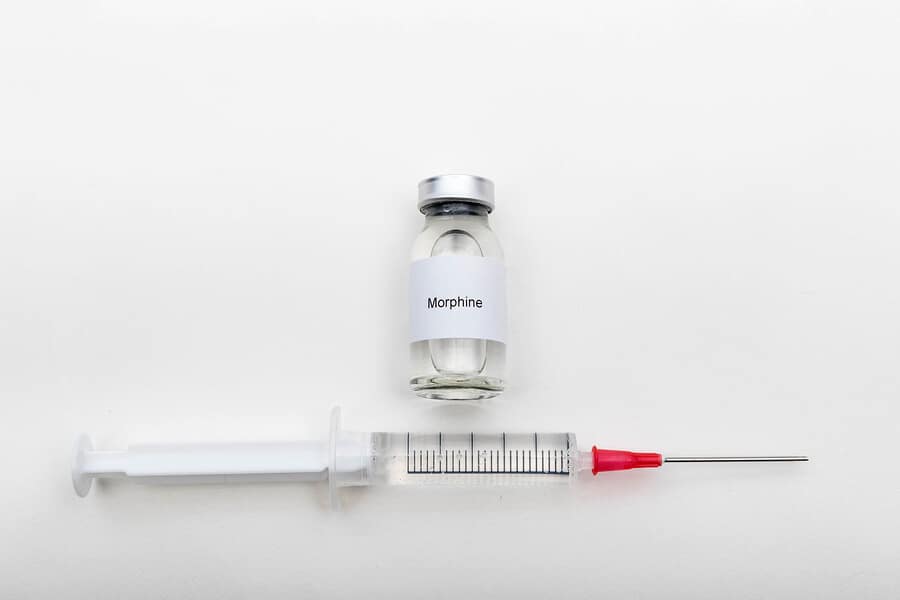
The Drug Enforcement Administration (DEA) defines a narcotic as a drug that relieves pain and produces drowsiness, stupor, or insensibility. The use of this word is most often associated with either prescription or illicit opioids and opiates.
Opioids work to diminish the perception of pain signaling in the central nervous system (CNS) but also induce pleasant and rewarding effects, and therefore, have a high potential for abuse and addiction.
Commonly Abused Narcotics
The following is a list of some of the more commonly-known narcotics:
Opium
Before opiates were synthesized for medical use, opium was the go-to drug as it can be used with only minimal processing. Three alkaloids in opium (morphine, codeine, and thebaine) have served as the main constituents for the synthesis of many contemporary opioids. Opium itself is not a common drug of abuse in the U.S.
Heroin
Heroin is an illicit semi-synthetic opiate derived from morphine that is classified as a Schedule I controlled substance in the U.S. Potent opioids such as heroin dull pain sensations but can also impair cognition and cause profound sedation. In extreme cases, heroin can slow automatic functions like respiration and heart rate to dangerously low levels. Due to the ongoing opioid epidemic, heroin use in the U.S. is at an all-time high. It has resulted in thousands of overdose deaths each year.
Heroin exists in many forms, from a whitish to brownish powder or as a less pure sticky, black substance, known as Black Tar Heroin. Heroin can be used by smoking, injecting, or snorting. It induces intense and rapid feelings of pleasure and euphoria. People who use it may cycle between an alert and unconscious state, known as being “on the nod.”
Oxycodone (OxyContin, Roxicodone, and Percocet)
Oxycodone is among the most popular and controversial drugs in recent history. It can be an effective treatment for moderate to severe pain, especially when combined with acetaminophen. However, long-term use of oxycodone can lead to the development of physical dependence and addiction. It may also lead to the abuse of less expensive, illicit drugs, such as heroin, when a person is unable to obtain or afford their drug of choice.
Hydrocodone (Vicodin, Norco, Lortab)
Hydrocodone is the most prescribed and commonly diverted and abused drug in the U.S. In fact, Americans consume around 99% of the world’s supply of this drug. Hydrocodone and its many combination products (e.g., Norco, Vicodin) are Schedule II controlled substances. Although hydrocodone products are only intended for oral administration, some may abuse them by crushing and snorting, smoking, or injecting them.
Morphine (MS Contin and Kadian)

As noted, morphine is a natural opiate alkaloid derived from opium. Pharmaceutical morphine is used as an analgesic for the management of pain and to induce sedation before surgical procedures. Morphine is one of the most widely used pain medications in hospital settings and often comes as a liquid solution. For this reason, those dependent on morphine may prefer to inject the drug as it offers a more rapid and intense onset of effects than when consumed orally.
Hydromorphone (Dilaudid and Exalgo)
Hydromorphone is a semi-synthetic opioid derived from morphine that is commonly used in hospitals for pain control. However, it is also found on the streets as a product of drug diversion. Like other opioids, when abused, people may attempt to smoke, snort, or inject it. Hydromorphone is very potent, considered to be highly addictive, and has a high potential to result in overdose when abused.
Fentanyl (Actiq, Duragesic, Subsys, Abstral)
Fentanyl is an extremely powerful opioid found in prescription and illicit forms. 1oo times more potent than mophine, its use in illicit drugs has led to thousands of deaths in the past few years. By prescription, it is often found in the form of a lozenge or patch. These methods that allow for slow delivery into the bloodstream for a prolonged period.
However, fentanyl is often manufactured illegally and in powder form. It is often laced into heroin (as effects are very similar) or other drugs to extend the supply and maximize dealer profits. Furthermore, people who are seeking heroin are often unaware of fentanyl’s presence in the drug, making the potential for overdose extremely high. In fact, even a tiny amount may be enough to cause an overdose, especially for someone who has not built a tolerance to it.
Codeine
Codeine is used to manufacture prescription medications, particularly cough syrups such as Tylenol 3/4. It is a relatively mild opioid analgesic and a less potent pain reliever than morphine. However, people abuse the drug by consuming it in quantities higher than those prescribed.
However, the drug may be misused by consuming tablets or oral solution in quantities that exceed prescribed doses. It’s also commonly abused as “Lean” or “Purple Drank,” where it’s mixed with soda and candy. It can also be combining it with other psychoactive substances, such as alcohol, for more significant intoxicating effects. Still, this practice, is of course, hazardous and could lead to life-threatening complications and overdose.
Methadone (Dolophine and Methadose)
Methadone is a synthetic opioid that also has analgesic properties but is most commonly used for opioid replacement therapy for those who are addicted to more potent opioids, such as heroin. It is dispensed in pill, liquid, or wafter forms to be administered once per day through federally regulated clinics.
Methadone is a long-acting opioid that remains active in the bloodstream long after effects wear off. This means it can be taken in lower doses, less frequently to keep opioid withdrawal symptoms at a minimum. However, methadone is occasionally diverted and still has the potential for abuse, dependence, and addiction.
Meperidine (Demerol)
Meperidine is used to treat moderate to severe acute pain, sometimes for before or after surgery. Long-term use is not recommended as it can result in toxicity. Meperidine may be prescribed as a syrup or tablet, and like all opioids, it has the potential for abuse and addiction.
Tramadol (Ultram, Ultracet)

Tramadol is somewhat unique in that it not only has opioid agonist effects but also blocks the reuptake of adrenaline and serotonin. It is thought to have a low potential for abuse and dependence but is still considered a controlled substance by the DEA.
Tramadol is most often abused by those who are already opioid-dependent and those who suffer from chronic pain. Although tramadol may be less addictive than other opioid drugs, it can still lead to physical dependence and addiction, especially when abused.
Carfentanil
Carfentanil is an incredibly powerful opioid used as a general anesthetic for large animals. It is believed to be roughly 10,000 times more potent than morphine. It is rarely found in the drug supply. However, in the second half of 2016 hundreds of people in Ohio overdosed on heroin laced with Carfentanil.
Buprenorphine
Buprenorphine is a partial opioid agonist commonly used for opioid dependence. In combination with the opioid antagonist naloxone, buprenorphine is widely available as Suboxone. It is widely used in Medication Assisted Treatment.
Getting Treatment for Opioid Addiction
If you suspect that you or someone you love is abusing opioids, we urge you to seek help today! Harmony Treatment and Wellness center offers comprehensive, state-of-the-art programs facilitated by caring addiction professionals committed to ensuring that every patient receives the tools and support they need to experience long-lasting sobriety and wellness.
If you are ready to take the first step, contact us to discuss treatment options. We are here to help!